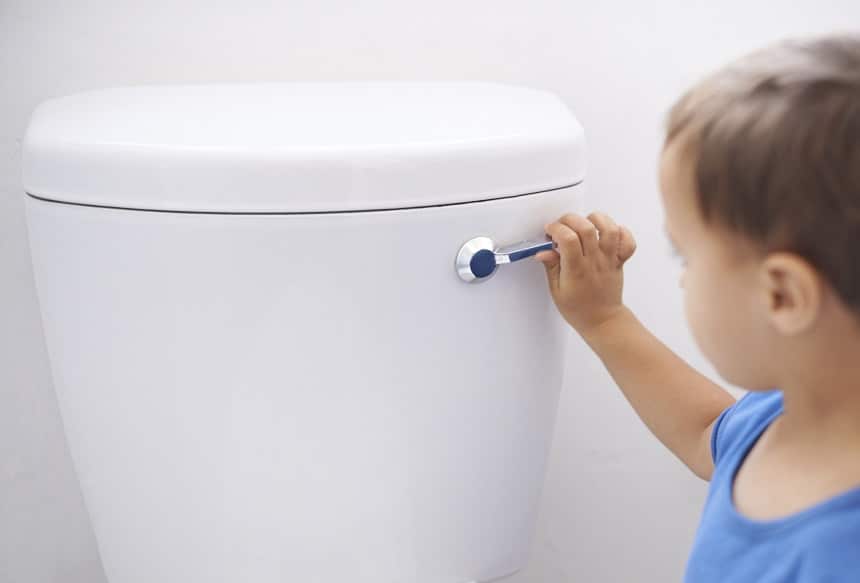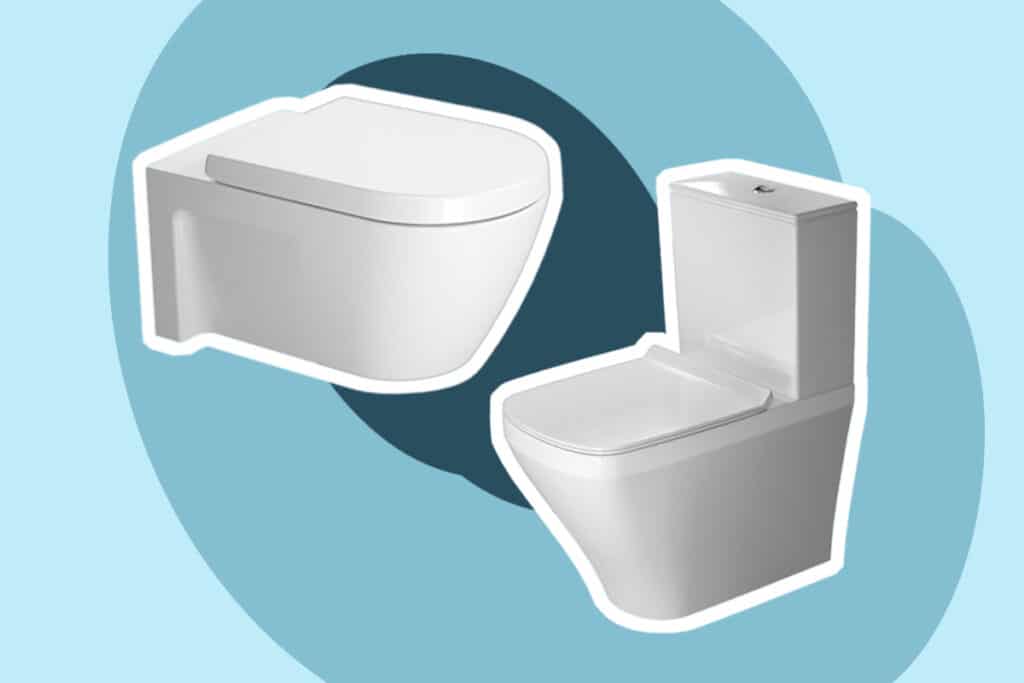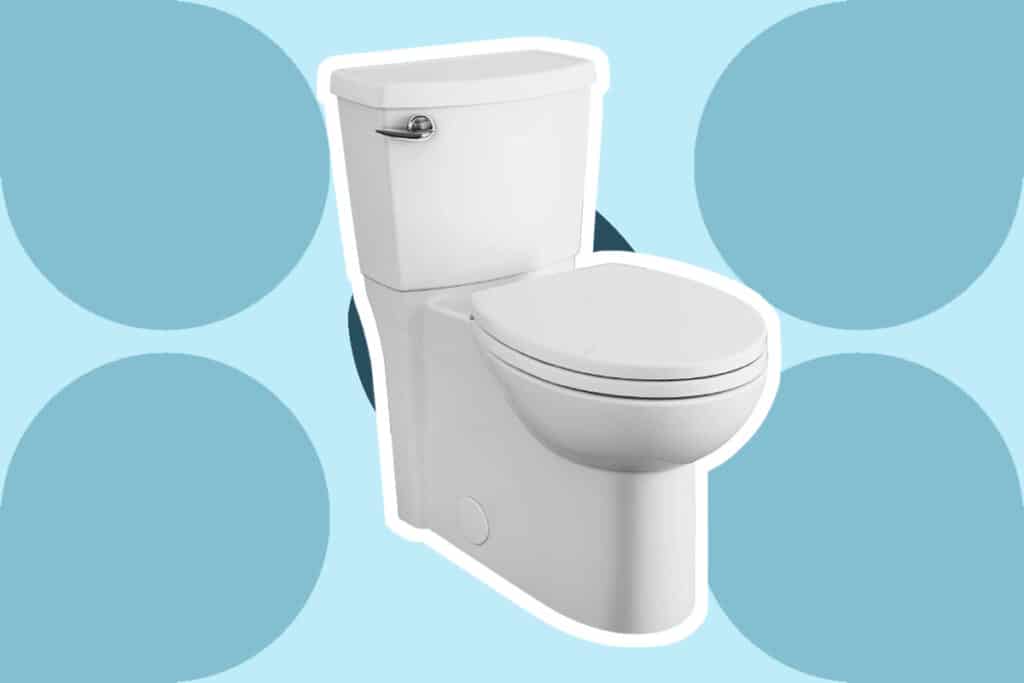

If you’re currently renovating your bathroom, you could be faced with the question of whether to replace the single flush toilet with a dual flush toilet. Eco-conscious homeowners and commercial property owners are also considering the dual flush or low flush toilet for its water-saving features.
When it comes down to picking between dual flush vs single flush toilets, there are a few considerations to take into account. Not every home or business is suited to the dual flush toilet. But, in many cases, using the single flush toilet design is not necessary anymore.
Each design uses a different flushing system to flush liquids and solid wastes away. Which one should you pick? Find out everything you need to know about these two different toilet designs as we give you all the information you need to make the right decision.
The single flush toilet uses one flushing system to get rid of both liquid and solid wastes from the toilet bowl. It uses the same amount of water every time the toilet is flushed, no matter what type of waste is being cleared.
Older single flush toilet designs used up to 3 to 5 gallons per flush (GPF) of water to discard the waste. Newer single flush toilet designs now only use 1.6 GPF or 1.28 GPF.
A dual flush toilet is designed using two different flushing systems. The one system uses a partial or half flush to get rid of liquid waste. The other system uses a full flush to discard solid waste from the toilet bowl.
The partial or liquids flush uses anything between 0.8 GPF to 1.0 GPF while the full flush for solid waste uses between 1.28 GPF to 1.6 GPF. The dual flush toilet normally has two buttons on top of the tank and to operate the dual flush, both buttons need to be pressed. Only one button is pressed for the partial flush.
When comparing the two toilet system designs and deciding which one is best depends on a number of factors. These include the amount of water being used during flushing, the efficiency of each design, and how easy they are to install and maintain.
Aesthetics of the designs plays a big role if you want to create a certain style in your bathroom. And, for some homeowners and business property owners, cost plays a huge role in any decision-making process. Lastly, sustainable use of natural resources is becoming more important, so this may be the deal-breaker when deciding which toilet system is best.
Some countries such as America stipulate that a toilet should not flush more than 1.6 GPF Trusted Source Low-flush toilet - Wikipedia A low-flush toilet (or low-flow toilet or high-efficiency toilet) is a flush toilet that uses significantly less water than traditional high-flow toilets. Before the mid-1980s in the United States, standard flush toilets typically required 23 liters (around 6 gallons) per flush and they used float valves that often leaked, increasing their total water use. en.wikipedia.org . While older single flush toilets were using up 5 gallons of water per flush, the modern design has changed the water consumption. You can now buy a single flush toilet that either uses 1.28 GPF or 1.6 GPF.
Dual flush toilets are designed to use two different flushes. The partial flush only uses up to 1.0 GPF while the full flush uses up to 1.6 GPF. This means, you can save on water consumption by having the option to select the appropriate flush.
Some of the best low flush toilets will minimize water consumption while saving you high water bills. Depending on the design you pick, you’ll be using only 1.3 gallons of water per flush.

If you’re looking for flushing efficiency, the single flush toilet wins hands down. The single handle flush is easier to operate than the dual flush toilet with its two buttons. Users report that operating the two buttons in one go requires more force compared to the single flush toilet.
Small children, the elderly, and disabled people may struggle to use the dual toilet flushing system. So, for a more efficient flushing system, pick the single flush toilet. However, for versatility of choosing between two flushes to do the right job of clearing wastes and saving water, the dual flush toilet is the winner.
With newer designs on the market, using a dual-flush intelligent toilet such as the Kohler K-5401-PA-0 Veil makes using the dual flushing system highly efficient. The all-in-one design is sleek and compact and uses 0.8 GPF on the half flush and 1.28 GPF on the full flush.
When looking at water consumption, the best dual flush toilets are more water-efficient while still having effective flushing performance. Plus, you’ll be saving up to 68% more water compared to the regular toilet design.

Both toilet designs are easy to install when new. Converting a single flush toilet to a dual flush toilet is not recommended as the mechanisms are different and costly. Both toilet designs are relatively easy to clean depending on the design of the toilet bowl and flushing strength.
However, maintenance of the dual flush system is not as simple as the single flush toilet. Parts are difficult to find and more expensive than parts for the single flush toilet. Replacements for the single flush toilet are easy to find at any local store dealing with toilet hardware.
The flushing system of the single flush toilet is also easier to repair than the more intricate flushing system of the dual flush toilet. Finding the best toilet fill valve is also essential when doing repairs on both toilet types – just make sure you get the right fit for your toilet design.
Single flush toilets offer you more versatility when it comes to finding a design to suit your bathroom décor. You can pick between various tank designs and have the option to change the handle design of your existing toilet to modify its appearance.
Dual flush toilets, while using new technology, are not adaptable to suit the aesthetics of your bathroom. You’re limited to the “two-button” flush design, making it more difficult to change the tank design.
However, with new technology comes modern designs and the WOODBRIDGE T-0019 sleek, comfortable and luxurious design will fit into any bathroom style. This dual flush toilet is WaterSense EPA certified Trusted Source WaterSense | US EPA Take steps each day to save water and protect the environment by choosing WaterSense labeled products in your home, yard, and business. Learn more about WaterSense and how we can all get more by using less. www.epa.gov for its water efficiency and high performance.
If you’re tied to a tight budget, you’ll find the single flush toilet is less expensive than the dual flush toilet. Not only are they cheaper to buy but their maintenance is less expensive too.
However, the dual flush toilet does save you on higher water bills. In the long run, you may find yourself saving on costs despite the initial high price of installing this toilet flushing system in your home or office building.
The dual flush toilet wins hands down when it comes to being the eco-friendlier design of the two types of toilets. The flexibility of choosing between a half or partial flush for liquid wastes and a full flush for solid wastes, means you can control how much water is being used.
While the dual flush toilet uses less water than the single flush toilet, it’s still highly efficient when flushing wastes away from the toilet bowl. It’s estimated you’ll be saving between 25,000 to 27,000 gallons of water every year when using this high-efficiency type toilet.
The single flush toilet is still the easier toilet design to use in most homes and businesses while the dual flush toilet saves you money and water in the long run. It’s recommended to install the single flushing system in larger households and on business premises because of maintenance costs and ease of use.
To decide which toilet design to use, make sure you factor in who will be using the toilet. Single flush toilets are more suited to high traffic volume while the dual flush toilet would be a great eco-friendly option for most homes.
When picking between the dual flush vs single flush toilets, both designs have their disadvantages and advantages. Make sure you know what they are before deciding on the best flushing system for your needs.





